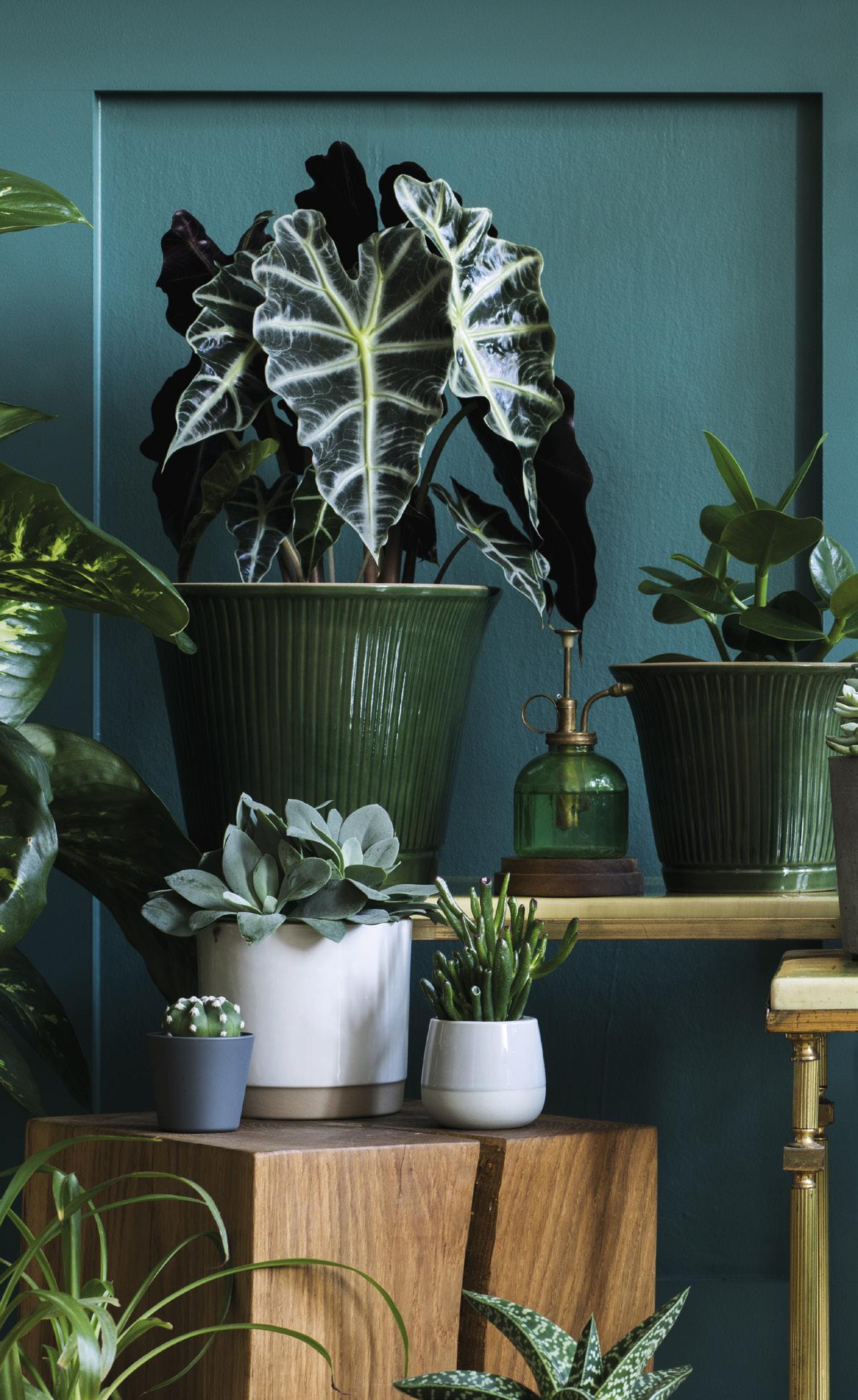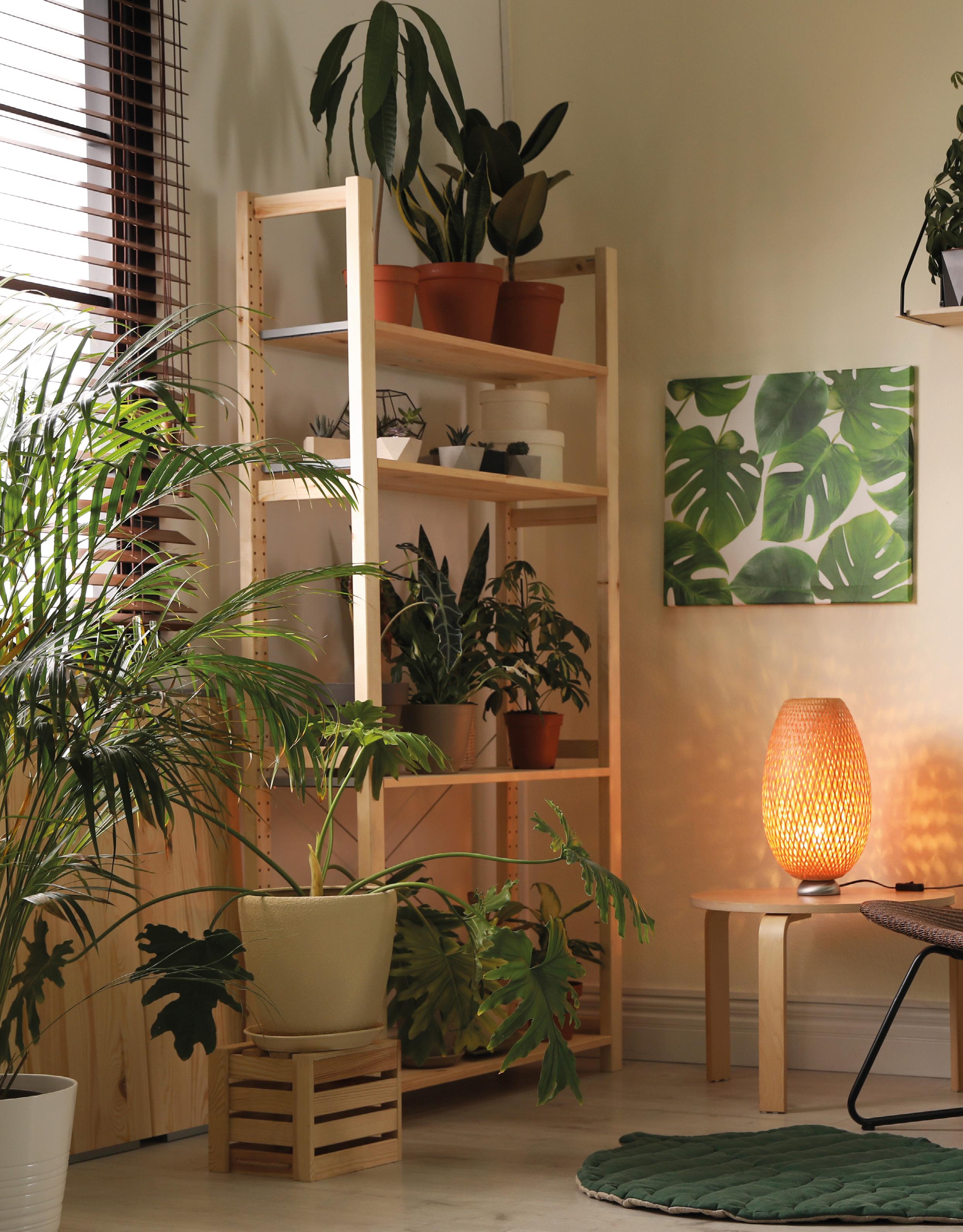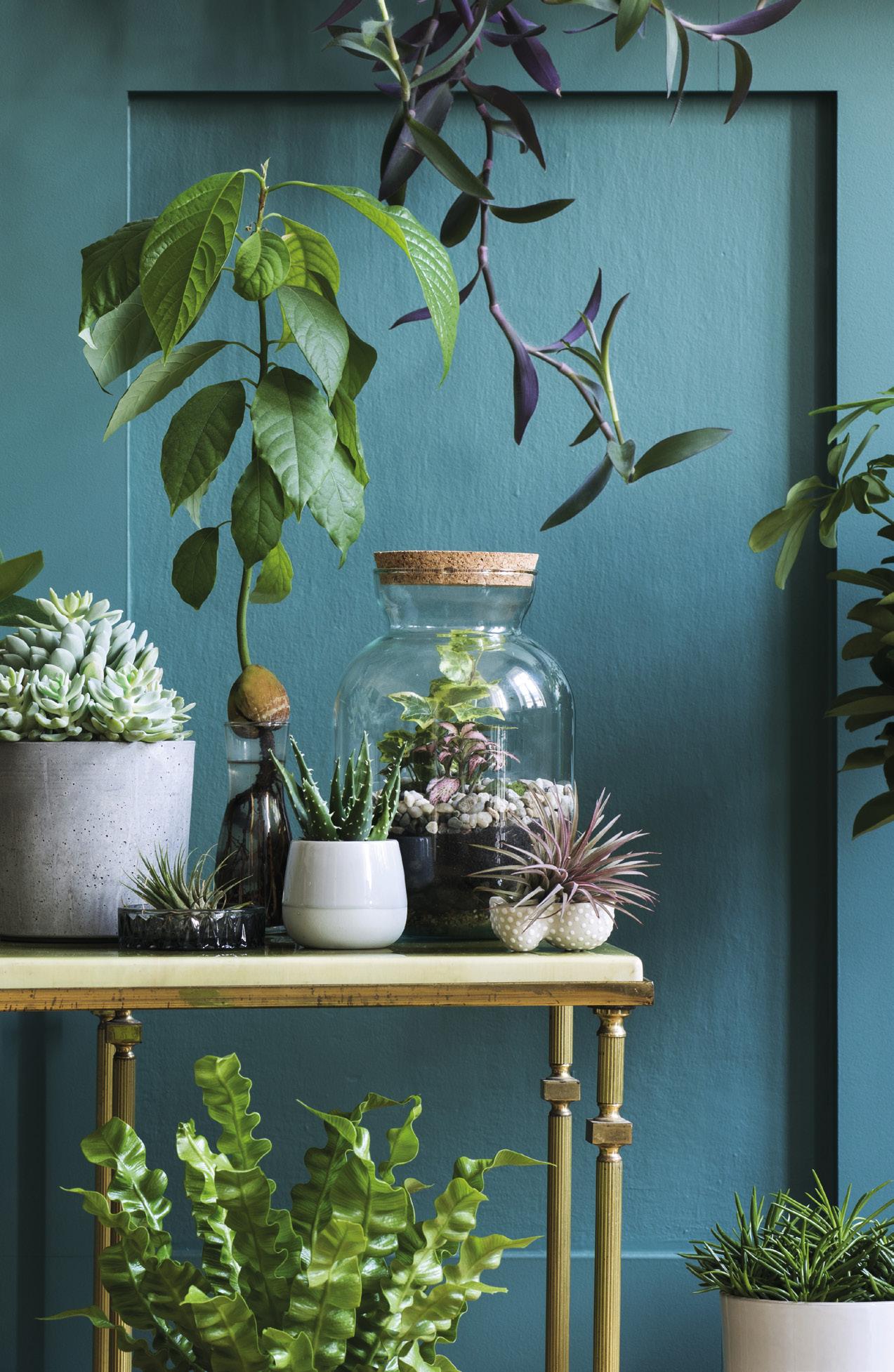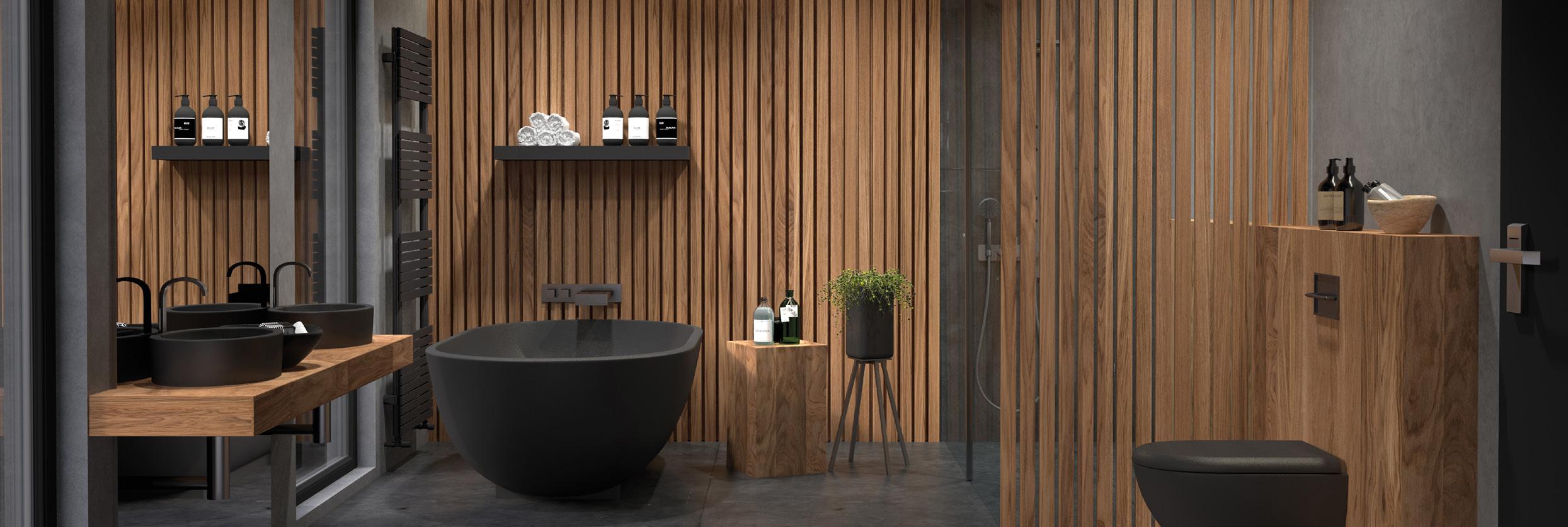
5 minute read
Bringing the Outdoors in
HOW ‘BIOPHILIA’ CAN HELP US THRIVE
Although people adopted the idea of plant ownership (for decoration rather than food) thousands of years ago, only recently has it become a hobby that everyone can participate in. The wealthy Egyptians, Greeks and Romans kept houseplants, and owning decorative plants remained a signifier of wealth through the renaissance and age of reason, as the wellto-do outcompeted each other with increasingly elaborate gardens, orangeries, and greenhouses. It was only in the Victorian era, with developments in heating and home design (including more natural light), that the middle and later working classes could get involved.
Over the last few years, it’s safe to say that houseplants have become a trend, with multiple hashtags used across Instagram, and whole forums on Facebook and Reddit being devoted to sharing tips on plant care, and images from proud plant owners.
The clean-living trend certainly promotes plants as an avenue to wellness, and there is growing evidence that plants can help you to de-stress, heighten productivity, and even help recover from illnesses faster.

Plants; boost your mood and increase productivity
Not only do plants fulfil the need for people to nurture something, but they are able to thrive on much less attention than a pet, or child; important when working long hours! In addition, many people are now in homes without gardens meaning that if they want to experience the wellbeing impact of nature at home, they need to bring the outside in. The same impact can also benefit people at work.
With the increase in office working in the 50’s, plants were used more to liven up often sterile working environments. This has continued to be a popular way of brightening up office space, and with new technology and understanding of the impact plants have on wellbeing, it’s something that many companies have been keen to develop.
In 2014, one of the first studies into the longterm effects of office plants found a clear return on investment as employees were significantly more productive when surrounded by plants. Lead author Marlon Nieuwenhuis said that “simply enriching a previously Spartan space with plants served to increase productivity by 15%. This identifies a pathway to a more enjoyable, more comfortable and a more profitable form of office-based working.”
Humans have a natural tendency to affiliate with nature; many studies have found blood pressure reduces when people are in the presence of plants and as a result, they are left feeling less stressed and more energised.
There are many low maintenance options for businesses looking to include more biophilic design elements into their office space (see page 30). Julie Anderson of Rap Interiors says “many workspaces love the idea of greenery and let’s face it bringing the outside in is a moodbooster for anyone. But not all offices like the maintenance of watering the plants, so very soon they don’t look great. With biophilic office deign incorporating living walls, you can create amazing focus points. In the breakout zones, office areas, reception welcome areas, a clever living wall design can be the talk of the town. We even have one in our own office.”

Biophilic design doesn’t just mean plants; natural materials – including wood and stone, increasing natural light, clever use of colour and an outside view are all ways that offices can be structured in a way that incorporates elements of nature. The increase of this kind of design in the workspace meshes well with both the desires of staff and management.
A UK study, ‘The Relative Benefits of Green verses Lean Office Space’, found that workers are 15% more productive if they have a higher level of contact with nature in their work environment. According to Rap Interiors, increasing the amount of natural light also increases creation of melatonin so that employees can have a better night’s sleep and feel more rested during the day. Utilising more windows with an open plan interior design and more collaborative workspaces, will boost the office environment and employee’s loyalty by 53% across all workers and even more with millennials at two thirds.
Natural light, greenery, and open spaces whether in the office or home, improves self-esteem, creativity and engagement on day-to-day tasks. There is even evidence that it can result in a reduction in absenteeism and increase staff retention, ultimately making a positive impact on company’s operating costs.
There is growing data to back up the multiple benefits that well-cared for plants can have on people, and with the proliferation of helpful guides online, and the abundance of affordable yet striking plants on offer, now is an excellent time to start incorporating biophilic design in your own environment.
STARTING YOUR OWN HOME OR OFFICE GARDEN
If you are considering starting your own home or office garden, it’s important to always consider the space that the plant will be occupying. You may think that the jasmine is beautiful, but if you have the wrong environment then it will soon become a depressing brown. Luckily, there are some beautiful, hard-to-kill plants that will brighten up any home or office space. Remember if you are looking for office plants, don’t get one with flowers if anyone has an allergy!
Pothos:
Also known as Devil’s Ivy, is a trailing plant with heart-shaped leaves that can grow in low or artificial light. It even lasts well if you forget to water it.
Snake Plant:
Also known as ‘mother-inlaw’s tongue’, the snake plant has stiff dark green and yellow leaves. It thrives in low light and also prefers a dryer environment.
Spider Plant:
The spider plant is popular for a reason – it’s a lovely vibrant plant that grows in indirect light and doesn’t need too much watering. It also sends out runners with spiderlings, so you can pot them up too and have even more plants.
Succulents and Cacti:
These neglect-proof plants are excellent for beginners – just put them in a pot and don’t water them too much!










